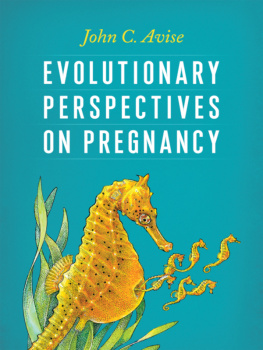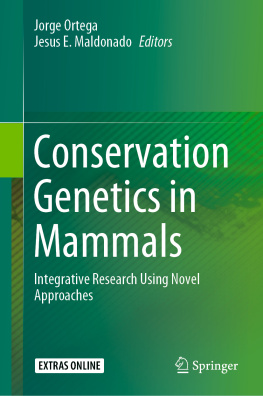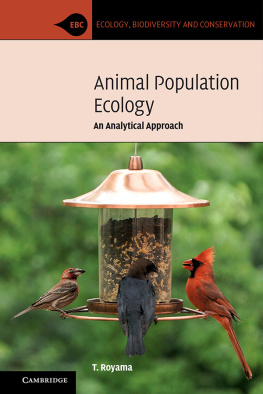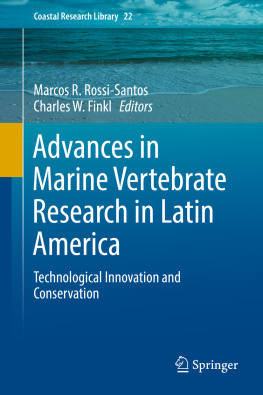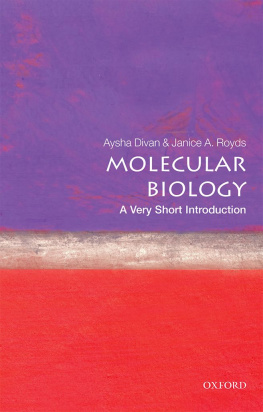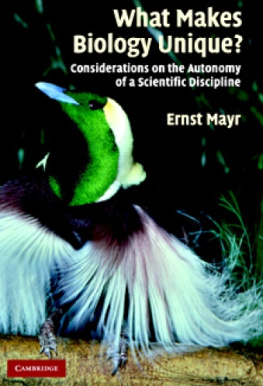EVOLUTIONARY PERSPECTIVES ON PREGNANCY
EVOLUTIONARY PERSPECTIVES ON PREGNANCY
JOHN C. AVISE
ANIMAL DRAWINGS BY TRUDY NICHOLSON
Columbia University Press
Publishers Since 1893
New York Chichester, West Sussex
cup.columbia.edu
Copyright 2013 Columbia University Press
All rights reserved
E-ISBN 978-0-231-53145-0
The authors research and writing are supported by funds from the University of California at Irvine.
Library of Congress Cataloging-in-Publication Data
Avise, John C.
Evolutionary perspectives on pregnancy / John C. Avise with animal drawings by Trudy Nicholson.
pages cm
Includes bibliographical references and index.
ISBN 978-0-231-16060-5 (cloth : alk. paper)ISBN 978-0-231-53145-0 (ebook)
1. Pregnancy in animals. 2. VertebratesReproduction. 3. InvertebratesReproduction. 4. Sexual selection in animals. 5. Evolution (Biology) I. Nicholson, Trudy H. II. Title.
QP251.A95 2013
573.66dc23
2012029371
A Columbia University Press E-book.
CUP would be pleased to hear about your reading experience with this e-book at .
References to Internet Web sites (URLs) were accurate at the time of writing. Neither the author nor Columbia University Press is responsible for URLs that may have expired or changed since the manuscript was prepared.
To the three women in my lifemy mother, Edith; my wife, Joan; and my daughter, Jenniferwho have given me personal but very different exposures to what human pregnancy entails
CONTENTS
Because humans are mammals that reproduce sexually, people are familiar with the concept of pregnancy (i.e., with the otherwise outlandish notion that one individual carries a genetically different individual inside its body for an extended period of time before expelling the latter through an orifice). If you are a man, you might feel relieved that this weighty reproductive imposition has been delegated to females in Homo sapiens, and if you are a woman, the thought of becoming pregnant might elicit any of a gamut of feelings from joy and contentedness to fear or even loathing. Such powerful emotional responses within and between the sexes are understandable given the profound impact that pregnancy can have not only on ones mortal life but also on ones genetic legacy. In short, pregnancy is a huge deal both personally and evolutionarily.
However, the standard mammalian perspective on pregnancy is much too parochial for this book. Instead, I explore the fascinating diversity of pregnancy-like phenomena in the many animal species that provide extensive gestational services for their offspring. Such evolutionary diversity is impressive in several regards. With respect to duration, a pregnancy may last just a few days or several years, depending on the species. With respect to the number of embryos, a pregnant parent may brood just one offspring at a time or many thousands (as in some fishes and invertebrates). With respect to a parents energetic investment in offspring, pregnancy in various species can range from a rather minor inconvenience to one of lifes greatest physiological challenges. With respect to gender of the gestating parent, anything goes, as evidenced by the fact that males become pregnant in more than 200 fish species, females do so in many others, and even some hermaphroditic (dual-sex) and parthenogenetic (asexual) individuals carry their offspring internally. Finally, with respect to the site of incubation, a pregnant parent in various species might house embryos in its ovary, uterus, stomach, mouth, vocal sac, or gill chamber; inside or outside a ventral epithelial pouch; cemented to its back or tail or legs; hooked to its forehead; or cased within either hard or soft eggs that might be shed immediately, retained and hatched internally, or perhaps deposited in special external hatcheries that one or both parents may have constructed or adopted.
Via the strong selection pressures that pregnancy motivates, the phenomenon in any species can have powerful feedback effects not only on the evolution of alternative gestational modes but also on many temporal reproductive processes ranging from prezygotic and postzygotic sexual selection to perigestational natural selection to extended postpartum parental care. Gestational phenomena in nature can be both fascinating and frustrating: fascinating because they evidence the sheer inventiveness of evolution, yet also frustrating because they can make pregnancy difficult to characterize. For example, many animals gestate progeny on their outer body surfaces rather than internally, but is this a key biological distinction, or should we expand the definition of pregnancy to include such organisms? If we do the latter, might we then go one step further by extending what we call pregnancy to encompass taxa in which an adult incubates its embryos in an external phenotype (such as a nest) that may be adjacent to but physically separate from the parent? These are just a few of the unorthodox questions about the ontogeny and phylogeny of pregnancy that this book explores. For now, my point is simply that pregnancy-like phenomena in nature offer a tantalizing smorgasbord for comparative evolutionary analyses.
Overall, pregnancy by almost any definition occupies a key node in the nexus of biological factors that can influence an individuals genetic fitness via both natural selection and sexual selection. Furthermore, many of the selective pressures related to pregnancy presumably have operated throughout the relevant phylogenetic history of a specified lineage, so we might expect each mode of pregnancy to have left decipherable genetic signatures on many of the reproductive structures, physiologies, and innate sexual behaviors of extant species. This book explores the many biological ramifications of pregnancy from novel evolutionary vantages. The perspectives developed here should intrigue almost anyone, but they should be especially illuminating for readers who might be unaccustomed to thinking in a comparative evolutionary vein.
Like its two predecessor books, which dealt with clonality (asexuality) and hermaphroditism (dual sexuality), the current treatment is at once broadly comparative, entertaining, and educational and as such intended for a wide audience. More specifically, this book is intended for college students, teachers, natural historians, interested laypersons, scientists in other fields, and anyone else who might appreciate a sweeping introduction to the biological ramifications of heavy parental investment in offspring. To my knowledge, no other book occupies the current niche: a biology-rich overview of the phylogeny, ecology, ontogeny, and natural history of pregnancy from diverse and oft-unorthodox evolutionary vantages. As in all of my writings on natural history and evolution, my overarching goals are to inform a broad readership about the wonders of nature and our planets marvelous biodiversity.

